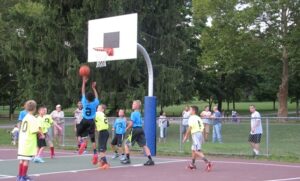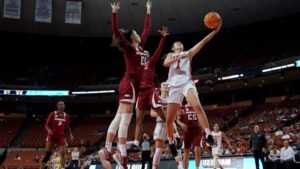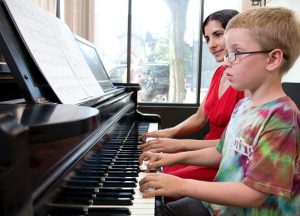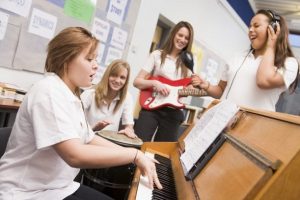Visualization
Vocabulary
| hoop | foul (2) | shoot/shot |
| titter | test (2) | distinguish |
| equal | identical | experiment |
| arc | effective | conclude |
| float | ability | over and over again |
| net | involve | concerto |
| rim | miss (3) | imprison |
| prove | imprint | the point is |
| go on | visualize | foul shot |
| ban | divide | competition |
| prove | effective | compose |
| touch | manner | pretty much |
| arrest | accuracy | regarding |
| swish | begin/began/begun |


The High School
A typical high school. This was the place where Australian scientist, Alan Richardson, chose to conduct an experiment. Not in a chemistry lab, but in a physical education class. It involved basketball.
The Procedure
In the beginning, Dr. Richardson tested all the students for accuracy in shooting basketball foul-shots. He then divided them into three groups of equal ability.
For the next twenty-one days, he instructed the first group to go into the gymnasium and practice shooting basketball foul shots. They did this for about 15 minutes, every day.
The Second Group
Dr. Richardson told the second group to practice too — but in a different manner. They never touched a basketball. Indeed the students never even entered the gym.
But they did practice at home in their living rooms. Or while riding the bus. Or pretty much anywhere they happened to be.
Visualization
What the second group did was — they pictured.
They visualized themselves making perfect foul shots. In their minds, they saw the ball being released from their hands. They saw it floating in a beautiful arc towards the hoop. They saw it entering the hoop. They heard the swish of the net.
What they didn’t ever do was to picture the ball bouncing and tittering on the rim of the basket . . . and then falling off to the side for a miss.
No. They never missed.
They SWISHED the basket every time. The second group did this over and over again.
The third group meanwhile was told to do nothing regarding basketball.
So that was the procedure for the experiment.
21 Days later
And at the end of the 21-day period, Dr. Richardson tested all three groups again in the gymnasium.
The third group’s performance and score remained unchanged.
With several weeks of practice, the first group had improved their score by 24%.
But the second group had also improved: by 23% — even though they had never even touched a basketball.
Mental Imprint
Dr. Richardson concluded that mental imaging had been as effective as actual physical activity in improving this skill.
Because in order to program yourself to be able to shoot basketballs, in order to get that skill imprinted upon your mind, you’ve got to practice.
But the mind does not distinguish between real practice and imaginary practice; to the mind, imagined activity and actual physical activity are the same. And so the outcomes will be identical.
The Pianist
Another example of the power of visualization comes from China.
In the 1950s, Liu Shikun, a pianist, won international music competitions in Hungary and Russia. He went on to become one of the country’s top concert performers.
That is until 1966, when during the Cultural Revolution, Western music was banned and, along with thousands of other artists, Liu was arrested and imprisoned.
His Release
And yet, when he was released six years later, he could still play the piano perfectly, even though he hadn’t seen or touched one during the entire period.
When asked how he had been able to maintain his talent all those years, Liu answered, “I kept practicing music in my head — and I even composed a concerto, though I had no paper or pen to write it down.”


Questions
Basketball. An experiment took place in a high school science laboratory. True or false?
Soccer, Football. Describe the experimental set up.
Baseball, Cricket. The first group . . . . . .
Rugby Football. What did the second group do?
Volleyball, Beach Volleyball. The group that practiced for real did significantly better than the second group, who performed better than the third group. Is this correct or wrong?
Ice Hockey. What was the conclusion of the experiment? What might be the explanation?
Tennis, Badminton. Visualization can only be applied to sports. Yes or no? What happened to Liu Shikun?
Track and Field. I have heard of visualization. Yes or no? Have you hear of Olympic athletes performing it in addition to their regular training?
Swimming. How might visualization be used to improve some aspect of your work or life?
Rowing, Kayaking, Canoeing. People don’t have to do real practice; they should simply sit back, relax and visualize. Do you agree?
Bicycling. Can visualization be a double-edged sword?
Marathon Run. What might happen in the future?
